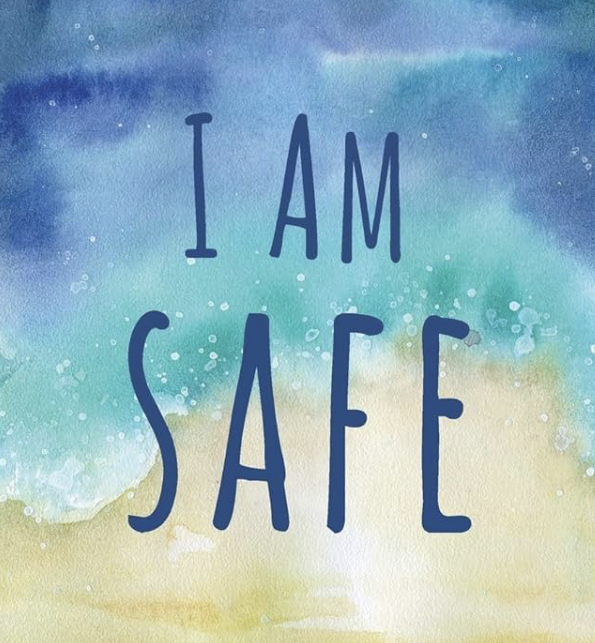Success is often portrayed as an external pursuit — a job title, a financial milestone, a personal achievement. But true success, especially success begins in an unlikely place: your subconscious mind. Why? Because your subconscious holds the key to feeling safe, and feeling safe is the foundation for thriving. Here I am going to dive into why this is the case and explore how addressing suppressed energies and unprocessed emotions can pave the way to genuine success.

The Subconscious and Safety: The Core Connection
Your subconscious mind is the vigilant gatekeeper of your safety. It stores memories, beliefs, and emotions from every moment of your life, whether you consciously remember them or not. Its primary job is to protect you from perceived threats. When you experience trauma — big or small, remembered or forgotten — your subconscious creates survival patterns to shield you from the discomfort of that experience. These patterns are driven by unprocessed energies and emotional charges.
For example, a childhood moment where you were scolded for crying might leave an imprint that expressing sadness is unsafe. This seemingly small incident can result in suppressed sadness that resurfaces as anxiety, irritability, or even physical tension later in life. Over time, these unprocessed feelings, coupled with ancestral influences and societal conditioning, form layers of resistance that keep you from feeling at ease.
Suppressed Energies: Why They Keep Popping Up
Trauma isn’t just about catastrophic events. It can be the seemingly minor moments when an emotion felt unsafe to process because of external influences. Maybe you were told to “stop being so sensitive” or “toughen up,” leading you to bury feelings that felt too big to handle. The problem is, these suppressed energies don’t go away. They remain stored in the body and mind, seeking release.
When you start to notice recurring uncomfortable thoughts, feelings, or low energy states, it’s not because you’re failing or broken. It’s because your subconscious is nudging you to process what was once too overwhelming. These emotions resurface because they need your attention. The bad. news? Well, there really isn’t any – whilst it can be exhausting when you keep experiencing the same emotions and patterns – feeling you are going round in circles – these emotions are signals that they are ripe to be processed, so they can flow and allow you to thrive – and thriving is what life is all about. Having faith in yourself that you are safe to process this, you can shift this cycle by building a relationship of trust with yourself.
Trusting Yourself: “I’ve Got This”
Convincing your subconscious that you are safe starts with self-trust. It’s about creating a foundation where you can say to yourself, “I’ve got this,” even when uncomfortable emotions arise. When you trust yourself to face what’s inside, you begin to process those old feelings instead of pushing them away. Processing doesn’t mean wallowing; it means allowing the emotion to flow through you without judgment or resistance.
Consider this: every time an emotion resurfaces, it’s an opportunity to release a layer of resistance. By meeting it with curiosity instead of fear, you build a new narrative for your subconscious. Over time, you’re rewiring those deep beliefs that told you certain feelings were unsafe.
Such phrases as:
I accept what I cannot accept
I choose to trust that I am safe to process this emotion – knowing it will pass.
Can help to install or reignite in the moment when needed.
The Role of Self-Love in Processing Emotions
At the heart of this process is self-love. Self-love creates the inner stability to approach your emotions with kindness and acceptance. When you love yourself, you stop seeing emotions as threats and start seeing them as signals. This shift in perspective makes it easier to work with what’s inside you instead of fighting against it. (For more on the transformative power of self-love, explore this article on self-love.)
Embracing All Emotions: Undoing Societal Conditioning
One of the greatest barriers to feeling safe is societal conditioning. From a young age, many of us are taught that some emotions are “good” while others are “bad.” Parents, teachers, and society often reward us for being happy or calm and discourage feelings like anger, sadness, or fear. This well-meaning but misguided conditioning leads us to suppress emotions instead of honouring them.
The truth is, all emotions are valid and necessary. They are part of the human experience and carry valuable insights about our needs and boundaries. Learning to feel comfortable with every emotion, without labelling it as good or bad, creates a profound sense of peace. (Explore this further in Learning to Dance in the Rain.)
Relaxing and Being: It’s Not Pandora’s Box
A common fear is that relaxing and allowing emotions to surface will unleash a Pandora’s box of pain. In reality, the opposite is true. Suppressing emotions creates internal tension, while allowing them creates freedom. Relaxing into your emotions doesn’t mean they will overwhelm you. It simply provides a safe space for your subconscious to process what’s inside.
Think of your emotions like water trapped behind a dam. Suppression keeps the dam in place, creating pressure. Relaxing is like opening a valve to let the water flow in a controlled way. It might feel intense at first, but the release brings relief and clarity. This process is an essential step towards feeling safe, peaceful, and ultimately successful.
A Final Thought: Success and Safety Go Hand in Hand
True success isn’t just about achieving goals; it’s about feeling at peace as you do so. Convincing your subconscious that you are safe allows you to move through life with ease and confidence. By working with suppressed energies, trusting yourself, and embracing all emotions, you create a foundation for success that is rooted in peace, not struggle.
As you take this journey, remember: you don’t have to do it all at once. Start small, build self-trust, and approach yourself with love and patience. When you do, you’ll discover that peace isn’t a destination; it’s a state of being that’s always available to you.
